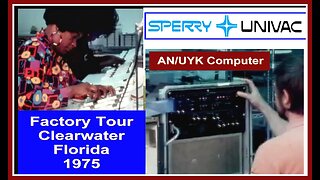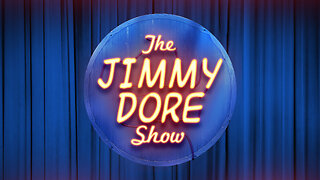Computer History: 1953 UNIVAC 1103 & 1103A Scientific, ERA, Remington Rand vacuum tube module
250423 Like and subscribe. This is an archive, check the link in the end if you are owner. Computer History: UNIVAC, Engineering Research Associates ERA 1103 of 1953, vacuum tube module, Remington Rand Univac.
Today we examine an original plug-in tube logic module for the UNIVAC 1103 computer of 1953. The UNIVAC 1103, announced February 1953, was designed and built by Engineering Research Associates, a division of Remington-Rand. Originally designated the E.R.A. 1103, it was later marketed under the UNIVAC name to maximize the brand recognition of the UNIVAC name.
In the 1950s, Seymour Cray (1925-1996) worked for Sperry Rand, playing a key role in the invention and design of the UNIVAC 1103. The 1103 was a general-purpose digital computing system for applications requiring large storage capacity, high operating speed, and programming versatility. Its internal memory consisted of up to 12,288 of 36-bit words of magnetic core storage, and about 17,000 words of magnetic drum storage. The 1103 contained 4,700 vacuum tubes, 6,000 crystal diodes, and 150 relays. It consisted of six large air-cooled cabinets containing electronic circuits, a photoelectric tape reader, an electric -typewriter, a high-speed tape punch, and its own air conditioning cabinet.
In terms of the time line of UNIVAC products, this computer was released several years after the UNIVAC 1 of 1951, and before the UNIVAC 2 of 1958.
An upgraded version called the 1103A, or "UNIVAC SCIENTIFIC COMPUTER" was announced in March of 1956, which utilized core memory in place of the Williams-Kilburn Tube memory, used in the 1953 version. The 1103A also added floating-point math capability. Although it was considered very successful, only about 20 of the 1103 and 1103A machines were ever made, compared with 46 of the UNIVAC 1, and about 27 of the UNIVAC 2 machines. This module from our collection, appears to be fully intact, with the original tubes and components, which is a very fortunate find in terms of preserving a bit of history.
Additional Technical Specifications:
The UNIVAC's tape servos used metallic tape, 1/2 inch wide, typically on 8 inch reels, in lengths of 1,500 feet or less. Six inch reels were used with the Unityper. A fifteen hundred foot tape reel at the highest density recording, can hold 1.4 million characters, or about 25,000 punch cards worth of data. A single 8 inch reel weighed about 4 pounds, so a large size UNIVAC tape library would require some serious floor space planning.
The Tape units themselves weigh about 475 pounds each. Optional non-metalic mylar compatible tape units were available to make the 1103 system compatible with non-UNIVAC Computer systems. A Remington-Rand Electric typewriter provided the basis for the Unityper attached to the UNIVAC Scientific. The UNIPRINTER output rate was 10 characters per second.
The High Speed printer could print at up to 600 lines per minute, but the recommended speed for best quality was 400 lines per minute. Tape-to-punch card converter, and card-to-tape converters, and punched paper tape readers and punch machines were also available peripheral devices.
A tape speed of 100 inches per second was standard, which equated to a data transfer rate of 1,810 computer words per second. The tapes could be read forward or backward. The tape drives used an eight channel recording method, with six channels for data, one for parity and one was a sprocket channel. Up to ten Uniservo magnetic tape units could be attached to one UNIVAC SCIENTIFIC computer.
Sales History: Only 20 of the UNIVAC 1103 and 1103A Computers were sold,
here is a nearly complete list of the Customers:
U.S. Navy Bureau of SHIPS
Vultee Aircraft, Los Angeles
Elgin Air Force Base, Florida
White Sands Proving Ground, New Mexico
Ramo-Wooldridge Corporation
Westinghouse, Inc.
Operations Research Office of Johns Hopkins University
Wright Air Development Center
Lewis Flight Propulsion lab, National Advisory Committee for Aeronautics (later NASA)
Remington Rand Univac, St. Paul, Minnesota
Numerical Analysis Center, University of Minnesota
Computing Laboratory, Southern Methodist Univ., Dallas, Texas
Missile Systems Division of Lockheed Aircraft Company, Palo Alto, CA
Boeing Airplane Company
Holoman Air Force Base
Applied Physics Laboratory of Johns Hopkins University, Maryland
National Security Agency
Recommended References include:
Information Technology (IT) Pioneers, Retirees and former employees of Unisys, Lockheed Martin, and their heritage companies (Univac, ERA, …)
https://vipclubmn.org/index.html
https://rumblevideoarchive.wordpress.com/
-
 17:09
17:09
Archive of Computer History Archives Project ("CHAP")
7 months ago1975 Computer History: SPERRY UNIVAC Factory Tour Employees AN/UYK-20 Technology Clearwater Florida
127 -
 4:04:04
4:04:04
Rekieta Law
6 hours agoThe Results of My Appeal Are In! I Wonder How It Went?!
23.4K24 -
 2:49:04
2:49:04
Fresh and Fit
7 hours agoAfter Hours w/ Girls
113K202 -
 6:54
6:54
Breaking Points
16 hours agoCraven Diddy APOLOGIZES After Hotel Assault Video
19K22 -
 2:36:44
2:36:44
Spittin' Chiclets
8 hours agoVancouver-Edmonton Game 7 Live Stream
36.4K3 -
 3:41:38
3:41:38
The Jimmy Dore Show
2 days agoThe Jimmy Dore Live Panel Show
242K315 -
 1:24:43
1:24:43
Fresh and Fit
12 hours agoSteve Mayeda On How Child Custody Battles Can Ruin Men's Lives
72K25 -
 7:11:04
7:11:04
Akademiks
11 hours agoDiddy Apologizes for Brutally Beating Cassie in Viral Video. Did the Feds, Cassie or Hotel Leak this
89.5K48 -
 1:16:44
1:16:44
The Anthony Rogers Show
19 hours agoEpisode 313 - Smile Empty Soul
31.3K -
 9:41
9:41
China Uncensored
12 hours agoWhy Is Everything In China Falling Apart?
32.1K25